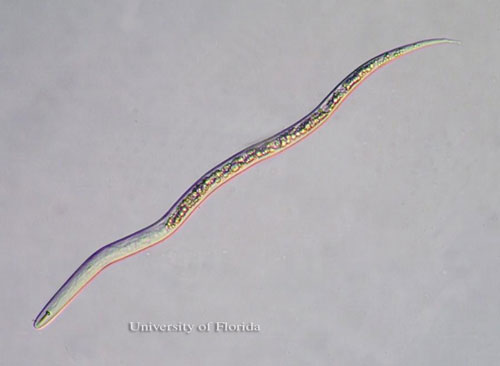
University of Florida Institute of Food and Agricultural Sciences professor Larry Duncan discussed the citrus nematode (Tylenchulus semipenetrans) during a recent international webinar on plant parasitic nematodes hosted by ADAMA.
T. semipenetrans has a worldwide geographical distribution, making it the most common plant parasitic nematode of citrus. According to Duncan, this pest is regulated by seasonal carbon flux in fibrous roots and is less damaging than other citrus plant parasitic nematodes.
Citrus nematode population density in Florida is seasonal and very predictable, says Duncan. Populations tend to increase during the dry season and decline during the wet and rainy season. Because dry conditions are more favorable for the pest, population density is much higher in the Central Ridge region (deep, sandy soil) versus the Flatwoods region (shallow soil due to a high water table).
Duncan adds that soil salinity also has an effect on citrus nematode populations. Fluctuations in soil salinity from high to low favor nematode reproduction, while sandy soils poor in organic matter hinder population increase.
Duncan also notes that nematode presence decreases potassium and nutrients that the citrus plant needs, reducing overall tree health.
Currently, there are several rootstocks on the market that are resistant to citrus nematodes, including Forner-Alcaide 5 (tolerant to high soil pH) and Swingle citrumelo (not tolerant to high soil pH).
“If you’re going to be introducing these resistant rootstocks into your grove, you don’t want to be putting them into orchards if all you’re doing is replacing some unthrifty trees,” Duncan says. “If you’re going to be placing these trees next to infected, susceptible hosts, they can very possibly develop resistance-breaking biotypes as those nematodes are continuously trying to reproduce on them.”
Duncan highly recommends growers only use these rootstocks when replanting an entire grove.
Ashley Robinson, AgNet Media communications intern, wrote this article.










